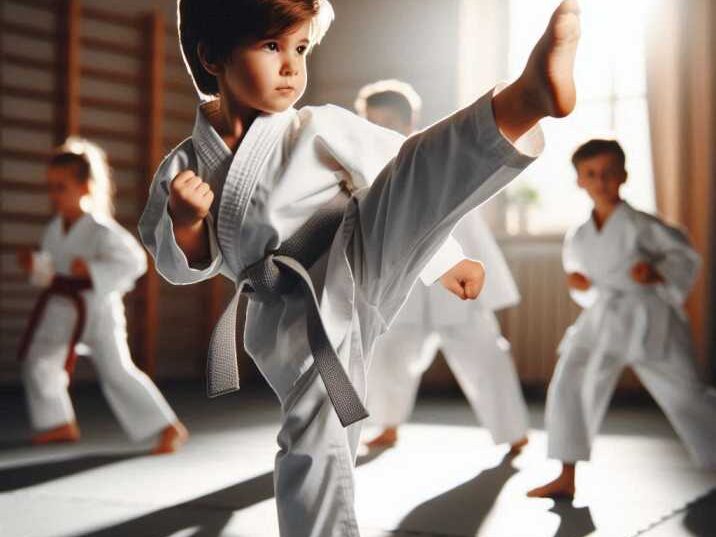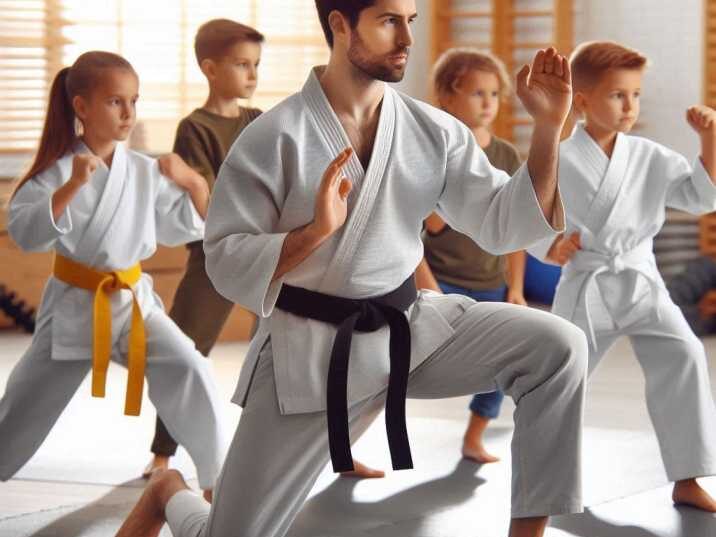Introduction
Table of Contents
Martial arts is more than just a form of self-defense; it’s a way of life that promotes discipline, focus, and physical fitness. For children, learning martial arts can be a fun and engaging way to stay active while developing valuable life skills. But can martial arts help prevent childhood injuries? The answer is yes! By teaching kids how to move safely, improve their balance, and enhance their strength and flexibility, martial arts can significantly reduce the risk of injuries in everyday life and during sports. This article explores the benefits of martial arts for children, how it can prevent injuries, and its positive impact on their overall well-being.

How Martial Arts Helps Prevent Childhood Injuries
Martial arts training focuses on coordination, strength, and awareness, all of which play a crucial role in injury prevention. Here’s how martial arts can help:
1. Enhances Coordination and Balance
One of the primary skills taught in martial arts is balance. Techniques such as kicks, stances, and forms require a high level of balance and coordination. Improved balance reduces the likelihood of falls, which are a common cause of injuries in children. By practicing movements that require maintaining balance, children develop better body control, making them less prone to accidents both in and out of sports.
2. Builds Muscular Strength and Flexibility
Martial arts training includes exercises that build muscular strength and flexibility. Strong muscles support joints better, reducing the risk of sprains and strains. Additionally, flexibility improves the range of motion, allowing children to move freely and avoid muscle pulls or tears. For example, performing high kicks or low stances stretches the muscles, improving flexibility over time.
3. Teaches Proper Falling Techniques
One unique aspect of martial arts is teaching students how to fall safely. Learning how to land correctly in a fall helps prevent common injuries such as fractures or head injuries. Techniques like the forward roll or back break fall teach children how to disperse the impact of a fall, minimizing injury risks.
4. Promotes Body Awareness and Spatial Intelligence
Martial arts encourages children to be mindful of their movements and surroundings, known as spatial intelligence. This heightened awareness helps them navigate their environment more safely, reducing the risk of bumping into objects or tripping. Knowing how to move safely and efficiently reduces the risk of accidental injuries.
Benefits of Martial Arts Beyond Injury Prevention
While preventing injuries is a significant advantage, martial arts training offers numerous other benefits that contribute to a child’s overall development.
1. Improves Focus and Discipline
Martial arts requires a great deal of concentration and discipline. Kids learn to focus on their instructor’s commands, practice routines, and memorize sequences. This level of focus can translate to improved attention and performance in school, helping them excel academically.
2. Boosts Confidence and Self-Esteem
As children progress through the ranks in martial arts, they gain a sense of accomplishment. Learning new techniques and earning belts builds confidence and self-esteem. This boost in self-worth can positively affect how they approach challenges in other areas of their lives.

3. Encourages Healthy Lifestyle Choices
By engaging in regular physical activity through martial arts, children are more likely to adopt other healthy lifestyle habits, such as proper nutrition and adequate sleep. These habits contribute to overall health and well-being, further reducing the risk of injuries and illnesses.
4. Fosters Respect and Responsibility
Martial arts emphasizes respect for instructors, peers, and oneself. Children learn to follow rules, listen attentively, and respect others’ personal space. This understanding of respect and responsibility can help them make safer choices, further reducing the likelihood of injuries.
Popular Martial Arts for Children and Their Benefits
Not all martial arts are the same. Each style has unique benefits that can help children in different ways. Here’s a table outlining some popular martial arts styles and how they benefit children:
| Martial Art Style | Key Benefits | Ideal Age to Start |
|---|---|---|
| Karate | Focuses on strikes, builds discipline, and confidence | 4-5 years old |
| Taekwondo | Emphasizes kicks, enhances flexibility, and balance | 4-5 years old |
| Judo | Teaches grappling, safe falling techniques, and coordination | 6-7 years old |
| Brazilian Jiu-Jitsu | Focuses on ground defense, builds strength, and strategic thinking | 7-8 years old |
| Kung Fu | Combines various movements, improves agility, and mental focus | 5-6 years old |
How Martial Arts Training Requires Concentration and Discipline
Training in martial arts is not just about physical activity; it’s a mental exercise as well. Concentration and discipline are two core components of martial arts training that have far-reaching benefits for children.
1. Enhances Academic Focus
Children who train in martial arts learn to concentrate deeply on their movements and techniques. This enhanced focus can carry over to their academic life, helping them concentrate better in class and while doing homework.
2. Develops Goal-Setting and Achievement Skills
In martial arts, progression is often marked by a belt system, which teaches children the value of setting goals and working hard to achieve them. This mentality can help children develop a strong work ethic in their studies and future endeavors.
3. Improves Emotional Regulation
Martial arts teaches children how to control their emotions, which is especially important when they face frustration or failure. Learning to stay calm and focused, even when things are challenging, is a skill that can help them in many aspects of life, including school and social situations.
4. Promotes Teamwork and Social Skills
Many martial arts classes involve partner work, which encourages children to develop social skills and learn to work as a team. This cooperation and understanding help build strong relationships and empathy among peers.
Common Misconceptions About Martial Arts and Childhood Injuries
Despite its benefits, some parents are concerned that martial arts might be too dangerous or intense for children. However, most martial arts classes are conducted in a controlled environment with a focus on safety.
1. Martial Arts is Too Violent for Kids
Contrary to popular belief, martial arts is not about violence but about self-discipline and control. Children learn how to manage their strength and use it appropriately. They are taught that martial arts skills should only be used in self-defense or to protect others, never to harm.
2. Martial Arts Could Lead to More Injuries
While any physical activity carries a risk of injury, martial arts is generally safer than many contact sports. The emphasis on technique, safety, and control in martial arts makes it a safe option for children, especially when compared to sports like football or hockey.
Conclusion
Martial arts offers numerous benefits for children, from injury prevention to building essential life skills like focus, discipline, and respect. By engaging in martial arts, children not only become physically stronger and more coordinated, but they also learn valuable lessons that can help them in all areas of their lives, including academics and social interactions. Parents looking for a fun, safe, and educational activity for their children should consider martial arts as a fantastic option that provides both physical and mental growth.
FAQs
- Can martial arts prevent injuries in children?
Yes, martial arts can help prevent injuries by teaching coordination, balance, and safe falling techniques. - What age can children start learning martial arts?
Children can start learning martial arts as early as 4-5 years old, depending on the martial art style. - Is martial arts safe for children?
Yes, martial arts is safe for children when taught in a controlled environment with a focus on safety and technique. - Does martial arts help with focus in school?
Yes, the concentration required in martial arts training can improve focus and attention in school. - What are the benefits of martial arts beyond physical fitness?
Beyond physical fitness, martial arts improves discipline, confidence, social skills, and emotional regulation.


